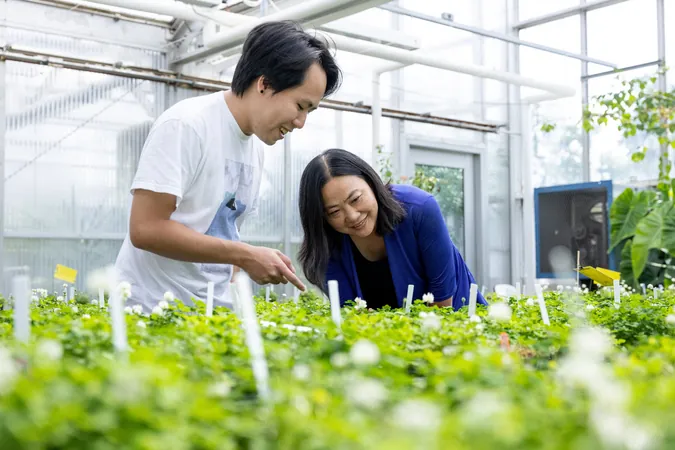
Groundbreaking Discovery: How Plants Outsmart Their DNA to Survive Climate Change!
2024-11-06
Author: Rajesh
In an astonishing revelation, biologists at Washington University in St. Louis have unearthed a fascinating mechanism that allows plants to defy their genetic programming. This discovery, published on November 6 in Science Advances, unveils the secrets behind a unique genetic duplication that empowers plants with multiple strategies to circumvent instructions embedded in their DNA. This innovation could revolutionize agriculture, enabling scientists to enhance plant resilience against crippling environmental changes like extreme heat and drought.
Led by Xuehua Zhong, a prominent professor of biology, the study zeroes in on DNA methylation—an essential process where small chemical groups known as methyl groups are affixed to DNA. This meticulous regulation dictates gene expression, influencing myriad traits that determine how organisms adapt to their surroundings.
A key aspect of this process involves silencing certain segments of DNA that transpose within the genome. These so-called transposons can wreak havoc if left unchecked. Interestingly, while mammals have only two critical enzymes responsible for adding methyl groups, plants boast an array of enzymes that perform this task in three different genomic contexts. Zhong poses a pivotal question: Why do plants possess these additional methylation enzymes?
The study spotlights two specific plant enzymes: CMT3 and CMT2. While both facilitate the addition of methyl groups to DNA, they target different sequences, with CMT3 focusing on CHG sequences and CMT2 on CHH sequences. Remarkably, CMT2 has evolved to lose its ability to methylate CHG sequences due to a missing amino acid, arginine, which leads to its unique function—a fascinating example of evolutionary adaptation.
Graduate student Jia Gwee, co-first author of the study, explains the significance of this alteration. "Arginine is special," she notes. Its positive charge allows for critical interactions with negatively charged DNA, a capability that CMT2 lacks due to its substitution with the non-charged amino acid valine. This discovery underscores how a simple mutation can drastically shift an enzyme's functionality.
To explore this evolutionary trajectory further, Zhong's lab employed a targeted mutation to revert CMT2 back to its original arginine form. This experiment yielded surprising results: CMT2 regained the ability to perform both CHG and CHH methylation, suggesting that this enzyme initially served as a redundant backup to assist in managing increasingly complex DNA structures.
Moreover, Zhong’s research sheds light on the unique architecture of CMT2, which features a long, flexible N-terminal that regulates its stability. "This adaptability is one of the hallmarks of plant evolution," she states, emphasizing how these traits contribute to genome stability and resilience against environmental stresses. Such features may illuminate why CMT2 has thrived across diverse ecological conditions globally.
The team's insights draw significantly from the 1001 Genomes Project, which maps whole-genome sequence variations in Arabidopsis thaliana—a common model plant—across the world. "We're moving beyond controlled lab environments," says Zhong. "We're analyzing diverse wild plant varieties using extensive genomic data."
This groundbreaking work highlights how the dynamic methylation process, including mobile transposons, might empower certain species to navigate harsh climatic conditions. With climate change posing a considerable threat to global agriculture, these findings represent a beacon of hope for developing robust crops better equipped to face environmental challenges.
Join the conversation about these revolutionary findings—Could this lead to the future of sustainable agriculture?




 Brasil (PT)
Brasil (PT)
 Canada (EN)
Canada (EN)
 Chile (ES)
Chile (ES)
 España (ES)
España (ES)
 France (FR)
France (FR)
 Hong Kong (EN)
Hong Kong (EN)
 Italia (IT)
Italia (IT)
 日本 (JA)
日本 (JA)
 Magyarország (HU)
Magyarország (HU)
 Norge (NO)
Norge (NO)
 Polska (PL)
Polska (PL)
 Schweiz (DE)
Schweiz (DE)
 Singapore (EN)
Singapore (EN)
 Sverige (SV)
Sverige (SV)
 Suomi (FI)
Suomi (FI)
 Türkiye (TR)
Türkiye (TR)